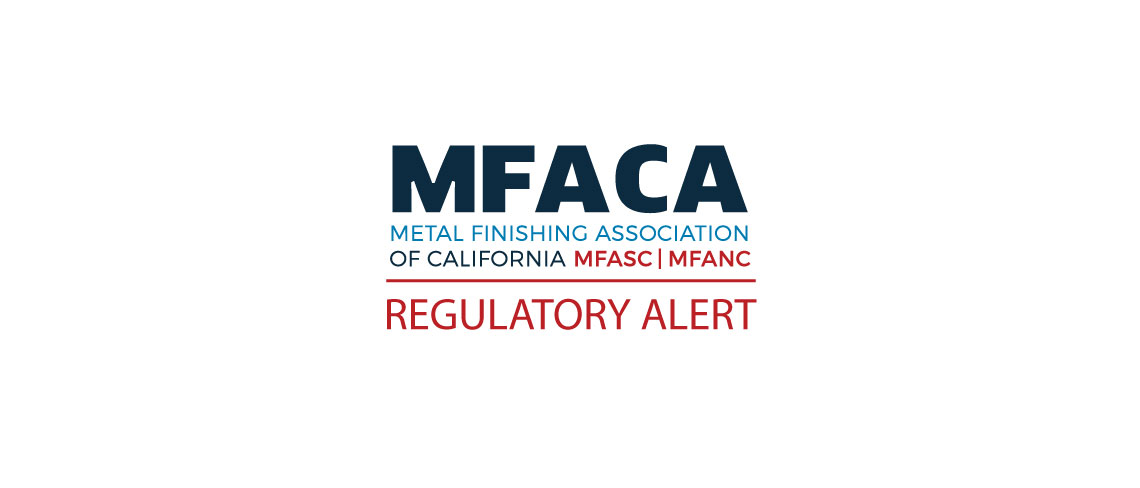The Metal Finishing Associations of Southern and Northern California met November 18th and 19th, respectively, for presentations on recent advocacy issues impacting the surface finishing industry. Jerry Desmond with Desmond & Desmond LLC, Sacramento, the California advocate for the Metal Finishing Associations of California, and Jeff Hannapel of The Policy Group on behalf of NASF, provided members with valuable insight to many ongoing and potential advocacy matters affecting the industry. Their updates included the following recent activities and regulatory developments impacting NASF members nationally and in California.
- NASF’s improved education and training initiatives and its new partnership with the National Center for Manufacturing Sciences (NCMS) on the National Metal Finishing Resource Center.
- NASF events, including the Leadership Conference, Washington Forum, 2016 SUR/FIN, and the Bright Design Challenge.
- The collaborative efforts to obtain a one-year extension on the ban of the use of perfluorooctance sulfonate (PFOS)-based fume suppressants pursuant to the federal chromium electroplating and anodizing air emissions (NESHAP) rule. The extension granted by the South Coast Air Quality Management District (SCAQMD) and the California Air Resources Board (CARB), with the support of U.S. EPA, will allow NASF members in California to continue to use PFOS-based fume suppressants in chromium electroplating and anodizing baths until September 21, 2016, or until a non PFOS-based fume suppressant substitute has been certified for use by the State of California.
- The technical comments and testimony of NASF’s partners, the Nickel Institute and NiPERA, submitted to California’s Proposition 65 Developmental and Reproductive Toxicant Identification Committee (DARTIC) regarding its proposal to list nickel metal as a reproductive toxicant. These efforts led DARTIC to recommend to the Office of Environmental Health Hazard Assessment (OEHHA) that nickel and nickel compounds be given a medium to low medium priority for possible hazard identification.
- The ongoing regulatory proceedings that will likely result in significant changes to requirements under California’s Proposition 65, including the warning requirements, safe harbor levels, naturally-occurring chemicals, and average consumer exposure measurements.
- The NASF and California Chapters dialogue with the state Department of Justice (DOJ) and its Controlled Chemical Substance Program (CCSP) regarding efforts of chemical supplier and job shop members to meet the program requirements for sodium hypophosphite used in electroless nickel processes.
- The impact of OSHA trends and developments, potential revisions to metal finishing wastewater discharge limits, Clean Water Act jurisdiction, waste management and recycling, additional developments impacting nickel metal and compounds, the chromium electroplating NESHAP rulemaking and litigation, European REACH legislation, requirements for conflict minerals, and environmental justice.




